International
WHO IS RUNNING THE COUNTRY?

News release from Seymour Hersh
Biden’s decline has been known to friends and insiders for months
Readers of this column know that President Joe Biden’s drift into blankness has been ongoing for months, as he and his foreign policy aides have been urging a ceasefire that will not happen in Gaza while continuing to supply the weapons that make a ceasefire less likely. There’s a similar paradox in Ukraine, where Biden has been financing a war that cannot be won and refusing to participate in negotiations that could end the slaughter.
The reality behind all of this, as I’ve been told for months, is that the president is simply no longer there, in terms of understanding the contradictions of the policies he and his foreign policy advisers have been carrying out. America should not have a president who does not know what he has signed off on. People in power have to be responsible for what they do, and last night showed America and the world that we have a president who clearly is not in that position today.
Seymour Hersh is a reader-supported publication. To receive new posts and support my work, consider becoming a free or paid subscriber.
The real disgrace is not only Biden’s, but those of the men and women around him who have kept him more and more under wraps. He is a captive, and as he rapidly diminished over the past six months. I have been hearing for months about the increasing isolation of the president, from his one-time pals in the Senate, who find that he is unable to return their calls. Another old family friend, whose help has been sought by Biden on key issues since his days as vice president, told me of a plaintive call from the president many months ago. Biden said the White House was in chaos and he needed his friend’s help. The friend said he begged off and then told me, with a laugh: “I would rather have a root canal procedure every day than go to work there.” A long retired Senate colleague was invited by Biden to join him on a foreign trip, and the two played cards and shared a drink or two on the Air Force One flight going out. The senator was barred by Biden’s staff from joining the return flight home.
I have been told the increasing isolation of the president on foreign policy issues has been in part the doing of Tom Donilon, whose younger brother, Michael, a key pollster and adviser in Biden’s 2020 presidential campaign and in the current re-election effort, was part of the team that spent much of the week briefing Biden for last night’s debate. Tom Donilon, who is 69, was President Biden’s national security adviser from 2010 to 2013 and sought unsuccessfully to be named as Biden’s director of the Central Intelligence Agency. He remains very much an insider.
Given Biden’s obvious decline in recent months, it is impossible for an outsider to understand why the White House agreed to any debates with Donald Trump before the election, let alone committing to the earliest presidential debate, the first of two, in modern history. One thought, I was told, was that if Biden performed well, as he had in his State of the Union speech in March, the issue of his mental capacity would be tabled. A poor performance would give the Biden campaign time to do a better prep job for the scheduled second debate.
There also was pressure from the major Democratic fundraisers, many of them in New York City, for the campaign to do something to counter the perception of the president’s obvious growing impairment, as reported and filmed by major media. I have been told that at least one foreign leader, after a closed meeting with Biden, told others that the president’s decline was so visible that it was hard to understand how, as it was put to me, “he could go through the rigors” of a re-election campaign. Such warnings were ignored.
What now? One of Washington political savants told me today that the Democratic Party is now facing “a national security crisis.” The nation is backing two devastating wars with a president who clearly is not up to it, he said, and it might be time to start drafting a resignation speech that would match or outdo the one given in March of 1968 by President Lyndon Johnson after his narrow victory over Senator Eugene McCarthy in the New Hampshire primary.
“They’re trapped,” he said of the senior advisers in the White House who hoped that Biden would somehow do well enough in last night’s debates to carry on, with the much-needed support of the more skeptical financial supporters in New York City.
Not everyone I talked to today agreed that it is time to force a Biden resignation and hope for the best at the Democratic National Convention in Chicago in August—to dump the ticket and seek new candidates. “My humble opinion,” one longtime contributor to the Democratic Party told me, “is to let the dust settle. Must examine the realistic options before some quick reaction creates an internal Democratic Party split with far-reaching consequences beyond 2024. Accept reality . . . 2024 is likely beyond recovery at this point. Too steep a hill to climb. Plan and execute a long-term plan to counter Mr. Orange and build a moderate platform for the recovery . . . and let Biden wander off to the Jersey Pine Barrens.”
A differing view was expressed by another political guru. “This is the age of social media—TikTok, Facebook, Instagram, and X—and a political campaign can go very far very fast.”
Whatever happens, we have a president—now fully unveiled—who just may not be responsible for what he does in the coming campaign, not to mention his actions in the Middle East and Ukraine.
Whatever happened to the 25th Amendment that authorizes the vice president and a majority of the Cabinet to declare the president incompetent? What is going on in the Biden White House?
Seymour Hersh is a reader-supported publication. To receive new posts and support my work, consider becoming a free or paid subscriber.
International
Biden autopen scandal: Did unelected aides commit fraud during his final days in office?
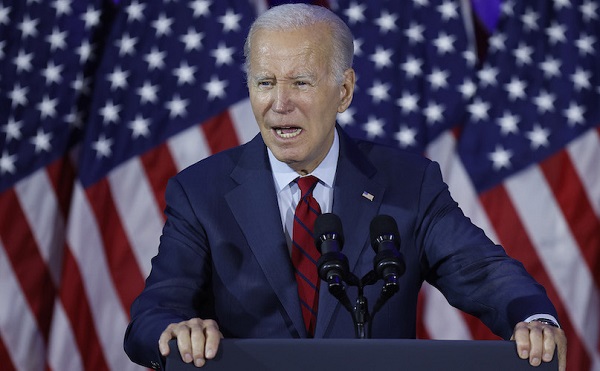
From LifeSiteNews
Biden administration aides signed pardons and executive orders by autopen in the president’s absence, which Texas Sen. Ted Cruz said could render them ‘null and void.’
The so-called autopen scandal appears to be getting worse for former President Joe Biden as more information comes to light.
Biden, some of his former staffers, and a handful of thought leaders in the Democratic Party have attempted to triage the message about the inner workings of the previous presidential administration. But tangible evidence is mounting that it was effectively run like a kind of politburo.
The New York Times released an interesting report Sunday afternoon that included a short interview with Biden saying he made decisions on clemency that were carried out with an autopen. In the final month of his presidency, Biden pardoned a number of high-profile people and granted clemency to an additional 1,500.
High-profile examples included his son, Hunter Biden, members of the January 6 committee, former National Institute of Allergy and Infectious Diseases Director Dr. Anthony Fauci, and former Chairman of the Joint Chiefs Gen. Mark Milley.
“Everybody knows how vindictive [President Donald Trump] is, so we knew that they’d do what they’re doing now,” Biden said in the Times interview. “I consciously made all those decisions.”
Some of the people on the 1,500-person list were violent criminals, including virtually everyone on death row.
Biden insisted that he was “conscious” of all his administration’s decisions (a contention not helped by his rambling responses).
But snippets from the Times’ report calls that claim into question.
“Mr. Biden did not individually approve each name for the categorical pardons that applied to large numbers of people, he and aides confirmed,” the Times reported. “Rather, after extensive discussion of different possible criteria, he signed off on the standards he wanted to be used to determine which convicts would qualify for a reduction in sentence.”
On Biden’s last day in office Biden’s Chief of Staff Jeff Zients gave approval to use the autopen in the cases of Fauci and Milley, according to the Times.
In addition, the Times reported that Biden’s staff who drafted the blubs for acts of clemency admitted that they weren’t in the room with the president when approval for signing them was made.
NYT reporting on Biden pardons starts by repeating him saying he made the clemency decisions…but then buries his staff’s admission that he actually didn’t, and that the staffers sending those decisions to the autopen weren’t actually in the room when Biden allegedly gave his say… pic.twitter.com/woCOJyafxg
— Drew Holden (@DrewHolden360) July 14, 2025
Whatever the intent of Biden or this report, it certainly didn’t clear up the suspicion that Biden wasn’t mentally competent to make decisions and that his staff and perhaps other people were essentially usurping executive power they didn’t have.
When you combine that with the recent decision by Biden’s White House doctor to continually plead the Fifth Amendment to remain silent at a recent closed-door House hearing and former first lady Jill Biden’s Chief of Staff Anthony Bernal suddenly becoming uncooperative with the autopen investigation, it certainly raises suspicion.
And that’s a potentially enormous scandal, even bigger than the media’s cover-up of the president’s health. Not only was the country put in danger with an out-to-lunch commander in chief, but members of his staff may have been wielding unconstitutional powers on his behalf.
Trump said to reporters Monday that the autopen scandal may be one of the biggest in American history, and he may be correct.
.@POTUS: "The autopen I think is maybe one of the biggest scandals that we've had in 50-100 years. This is a tremendous scandal… I guarantee you he knew nothing about what he was signing. I guarantee it." pic.twitter.com/ozngUkINSz
— Rapid Response 47 (@RapidResponse47) July 14, 2025
It’s a big stinking deal, to paraphrase Biden in his more lucid days.
Sen. Ted Cruz, R-Texas, wrote on X that “as a legal matter, that ANY pardon Biden did not ‘individually approve’ is NULL & VOID.”
🚨🚨 This NYT sentence:
“Mr. Biden did not individually approve each name for the categorical pardons that applied to large numbers of people, he and aides confirmed.
That means, as a legal matter, that ANY pardon Biden did not “individually approve” is NULL & VOID. https://t.co/CH2FYc9Jmn
— Ted Cruz (@tedcruz) July 14, 2025
Cruz may have come to this conclusion based on the testimony of a witness at a recent Senate hearing on the autopen use and abuse. Cruz asked Theodore Wold, a visiting fellow for law and technology policy at The Heritage Foundation, whether an executive order signed by a staffer who autopen signs it without the president’s knowledge is legally binding.
Wold answered, “No.”
‘HAIL TO THE PEN’: @SenTedCruz Torches Biden’s Use of Autopen as an ‘Assault on Democracy’
Since July 2022, the vast majority of Biden’s executive orders—including every single one in 2025—were signed by an autopen, not the president.
Is that legal? No. Is that democratic? Not… pic.twitter.com/Pc5QTDqBXN
— The Daily Signal (@DailySignal) June 18, 2025
Unfortunately, there is very little precedent here to rely on to determine what the status of those pardons is. So, this may end up being more of a political battle than a legal dilemma.
I suspect this is why close associates of Biden are becoming closed lipped. This is about more than just Biden’s legacy or the media’s shame. It’s about whether Biden’s pardons are legally binding. It’s about whether members of the Biden White House misused their power. Did they commit fraud?
Sen. Eric Schmitt, R-Mo., who is the chairman of a Senate committee looking into the autopen use, suggested that’s a possibility.
Here's what happened:
Biden didn't individually approve pardons. Rather, he signed off on criteria to be used in finding violent inmates he wanted to pardon or offer clemency.
Biden's staff then changed the final list and ran it through the autopen. https://t.co/F3GVi7hiiW
— Senator Eric Schmitt (@SenEricSchmitt) July 14, 2025
One way or another, the American people deserve answers.
Reprinted with permission from The Daily Signal.
Business
Canada must address its birth tourism problem
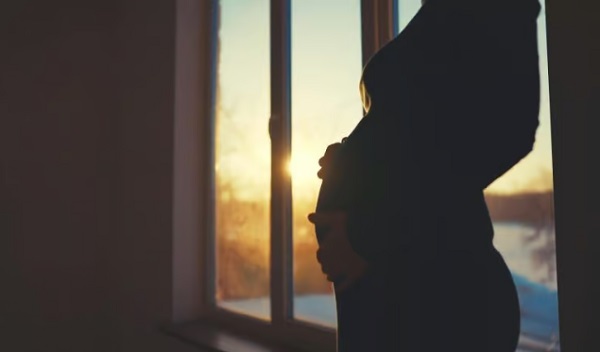
By Sergio R. Karas for Inside Policy
One of the most effective solutions would be to amend the Citizenship Act, making automatic citizenship conditional upon at least one parent being a Canadian citizen or permanent resident.
Amid rising concerns about the prevalence of birth tourism, many Western democracies are taking steps to curb the practice. Canada should take note and reconsider its own policies in this area.
Birth tourism occurs when pregnant women travel to a country that grants automatic citizenship to all individuals born on its soil. There is increasing concern that birthright citizenship is being abused by actors linked to authoritarian regimes, who use the child’s citizenship as an anchor or escape route if the conditions in their country deteriorate.
Canada grants automatic citizenship by birth, subject to very few exceptions, such as when a child is born to foreign diplomats, consular officials, or international representatives. The principle known as jus soli in Latin for “right of the soil” is enshrined in Section 3(1)(a) of the Citizenship Act.
Unlike many other developed countries, Canada’s legislation does not consider the immigration or residency status of the parents for the child to be a citizen. Individuals who are in Canada illegally or have had refugee claims rejected may be taking advantage of birthright citizenship to delay their deportation. For example, consider the Supreme Court of Canada’s ruling in Baker v. Canada. The court held that the deportation decision for a Jamaican woman – who did not have legal status in Canada but had Canadian-born children – must consider the best interests of the Canadian-born children.
There is mounting evidence of organized birth tourism among individuals from the People’s Republic of China, particularly in British Columbia. According to a January 29 news report in Business in Vancouver, an estimated 22–23 per cent of births at Richmond Hospital in 2019–20 were to non-resident mothers, and the majority were Chinese nationals. The expectant mothers often utilize “baby houses” and maternity packages, which provide private residences and a comprehensive bundle of services to facilitate the mother’s experience, so that their Canadian-born child can benefit from free education and social and health services, and even sponsor their parents for immigration to Canada in the future. The financial and logistical infrastructure supporting this practice has grown, with reports of dozens of birth houses in British Columbia catering to a Chinese clientele.
Unconditional birthright citizenship has attracted expectant mothers from countries including Nigeria and India. Many arrive on tourist visas to give birth in Canada. The number of babies born in Canada to non-resident mothers – a metric often used to measure birth tourism – dropped sharply during the COVID-19 pandemic but has quickly rebounded since. A December 2023 report in Policy Options found that non-resident births constituted about 1.6 per cent of all 2019 births in Canada. That number fell to 0.7 per cent in 2020–2021 due to travel restrictions, but by 2022 it rebounded to one per cent of total births. That year, there were 3,575 births to non-residents – 53 per cent more than during the pandemic. Experts believe that about half of these were from women who travelled to Canada specifically for the purpose of giving birth. According to the report, about 50 per cent of non-resident births are estimated to be the result of birth tourism. The upward trend continued into 2023–24, with 5,219 non-resident births across Canada.
Some hospitals have seen more of these cases than others. For example, B.C.’s Richmond Hospital had 24 per cent of its births from non-residents in 2019–20, but that dropped to just 4 per cent by 2022. In contrast, Toronto’s Humber River Hospital and Montreal’s St. Mary’s Hospital had the highest rates in 2022–23, with 10.5 per cent and 9.4 per cent of births from non-residents, respectively.
Several developed countries have moved away from unconditional birthright citizenship in recent years, implementing more restrictive measures to prevent exploitation of their immigration systems. In the United Kingdom, the British Nationality Act abolished jus soli in its unconditional form. Now, a child born in the UK is granted citizenship only if at least one parent is a British citizen or has settled status. This change was introduced to prevent misuse of the immigration and nationality framework. Similarly, Germany follows a conditional form of jus soli. According to its Nationality Act, a child born in Germany acquires citizenship only if at least one parent has legally resided in the country for a minimum of eight years and holds a permanent residence permit. Australia also eliminated automatic birthright citizenship. Under the Australian Citizenship Act, a child born on Australian soil is granted citizenship only if at least one parent is an Australian citizen or permanent resident. Alternatively, if the child lives in Australia continuously for ten years, they may become eligible for citizenship through residency. These policies illustrate a global trend toward limiting automatic citizenship by birth to discourage birth tourism.
In the United States, Section 1 of the Citizenship Clause of the Fourteenth Amendment to the Constitution prescribes that “All persons born or naturalized in the United States, and subject to the jurisdiction thereof, are citizens of the United States and of the State wherein they reside.” The Trump administration has launched a policy and legal challenge to the longstanding interpretation that every person born in the US is automatically a citizen. It argues that the current interpretation incentivizes illegal immigration and results in widespread abuse of the system.
On January 20, 2025, President Donald Trump issued Executive Order 14156: Protecting the Meaning and Value of American Citizenship, aimed at ending birthright citizenship for children of undocumented migrants and those with lawful but temporary status in the United States. The executive order stated that the Fourteenth Amendment’s Citizenship Clause “rightly repudiated” the Supreme Court’s “shameful decision” in the Dred Scott v. Sandford case, which dealt with the denial of citizenship to black former slaves. The administration argues that the Fourteenth Amendment “has never been interpreted to extend citizenship universally to anyone born within the United States.” The executive order claims that the Fourteenth Amendment has “always excluded from birthright citizenship persons who were born in the United States but not subject to the jurisdiction thereof.” The order outlines two categories of individuals that it claims are not subject to United States jurisdiction and thus not automatically entitled to citizenship: a child of an undocumented mother and father who are not citizens or lawful permanent residents; and a child of a mother who is a temporary visitor and of a father who is not a citizen or lawful permanent resident. The executive order attempts to make ancestry a criterion for automatic citizenship. It requires children born on US soil to have at least one parent who has US citizenship or lawful permanent residency.
On June 27, 2025, the US Supreme Court in Trump v. CASA, Inc. held that lower federal courts exceed their constitutional authority when issuing broad, nationwide injunctions to prevent the Trump administration from enforcing the executive order. Such relief should be limited to the specific plaintiffs involved in the case. The Court did not address whether the order is constitutional, and that will be decided in the future. However, this decision removes a major legal obstacle, allowing the administration to enforce the policy in areas not covered by narrower injunctions. Since the order could affect over 150,000 newborns each year, future decisions on the merits of the order are still an especially important legal and social issue.
In addition to the executive order, the Ban Birth Tourism Act – introduced in the United States Congress in May 2025 – aims to prevent women from entering the country on visitor visas solely to give birth, citing an annual 33,000 births to tourist mothers. Simultaneously, the State Department instructed US consulates abroad to deny visas to applicants suspected of “birth tourism,” reinforcing a sharp policy pivot.
In light of these developments, Canada should be wary. It may see an increase in birth tourism as expectant mothers look for alternative destinations where their children can acquire citizenship by birth.
Canadian immigration law does not prevent women from entering the country on a visitor visa to give birth. The Immigration and Refugee Protection Act (IRPA) and the associated regulations do not include any provisions that allow immigration officials or Canada Border Services officers to deny visas or entry based on pregnancy. Section 22 of the IRPA, which deals with temporary residents, could be amended. However, making changes to regulations or policy would be difficult and could lead to inconsistent decisions and a flurry of litigation. For example, adding questions about pregnancy to visa application forms or allowing officers to request pregnancy tests in certain high-risk cases could result in legal challenges on the grounds of privacy and discrimination.
In a 2019 Angus Reid Institute survey, 64 per cent of Canadians said they would support changing the law to stop granting citizenship to babies born in Canada to parents who are only on tourist visas. One of the most effective solutions would be to amend Section 3(1)(a) of the Citizenship Act, making it mandatory that at least one parent be a Canadian citizen or permanent resident for a child born in Canada to automatically receive citizenship. Such a model would align with citizenship legislation in countries like the UK, Germany, and Australia, where jus soli is conditional on parental status. Making this change would close the current loophole that allows birth tourism, without placing additional pressure on visa officers or requiring new restrictions on tourist visas. It would retain Canada’s inclusive citizenship framework while aligning with practices in other democratic nations.
Canada currently lacks a proper and consistent system for collecting data on non-resident births. This gap poses challenges in understanding the scale and impact of birth tourism. Since health care is under provincial jurisdiction, the responsibility for tracking and managing such data falls primarily on the provinces. However, there is no national framework or requirement for provinces or hospitals to report the number of births by non-residents, leading to fragmented and incomplete information across the country. One notable example is BC’s Richmond Hospital, which has become a well-known birth tourism destination. In the 2017–18 fiscal year alone, 22 per cent of all births at Richmond Hospital were to non-resident mothers. These births generated approximately $6.2 million in maternity fees, out of which $1.1 million remained unpaid. This example highlights not only the prevalence of the practice but also the financial burden it places on the provincial health care programs. To better address the issue, provinces should implement more robust data collection practices. Information should include the mother’s residency or visa status, the total cost of care provided, payment outcomes (including outstanding balances), and any necessary medical follow-ups.
Reliable and transparent data is essential for policymakers to accurately assess the scope of birth tourism and develop effective responses. Provinces should strengthen data collection practices and consider introducing policies that require security deposits or proof of adequate medical insurance coverage for expectant mothers who are not covered by provincial healthcare plans.
Canada does not currently record the immigration or residency status of parents on birth certificates, making it difficult to determine how many children are born to non-resident or temporary resident parents. Including this information at the time of birth registration would significantly improve data accuracy and support more informed policy decisions. By improving data collection, increasing transparency, and adopting preventive financial safeguards, provinces can more effectively manage the challenges posed by birth tourism, and the federal government can implement legislative reforms to deal with the problem.
Sergio R. Karas, principal of Karas Immigration Law Professional Corporation, is a certified specialist in Canadian citizenship and immigration law by the Law Society of Ontario. He is co-chair of the ABA International Law Section Immigration and Naturalization Committee, past chair of the Ontario Bar Association Citizenship and Immigration Section, past chair of the International Bar Association Immigration and Nationality Committee, and a fellow of the American Bar Foundation. He can be reached at [email protected]. The author is grateful for the contribution to this article by Jhanvi Katariya, student-at-law.
-

 Business24 hours ago
Business24 hours agoMark Carney’s Fiscal Fantasy Will Bankrupt Canada
-
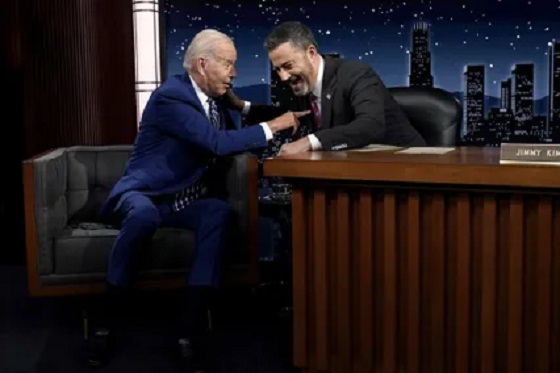
 Entertainment2 days ago
Entertainment2 days agoStudy finds 99% of late-night TV guests in 2025 have been liberal
-
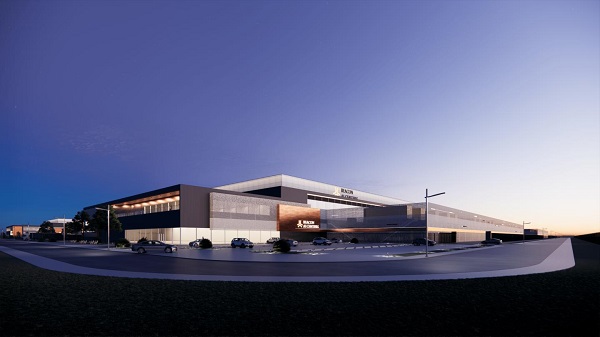
 Alberta23 hours ago
Alberta23 hours agoTemporary Alberta grid limit unlikely to dampen data centre investment, analyst says
-

 Opinion1 day ago
Opinion1 day agoCharity Campaigns vs. Charity Donations
-

 Frontier Centre for Public Policy2 days ago
Frontier Centre for Public Policy2 days agoCanada’s New Border Bill Spies On You, Not The Bad Guys
-

 Daily Caller19 hours ago
Daily Caller19 hours ago‘Strange Confluence Of Variables’: Mike Benz Wants Transparency Task Force To Investigate What Happened in Butler, PA
-
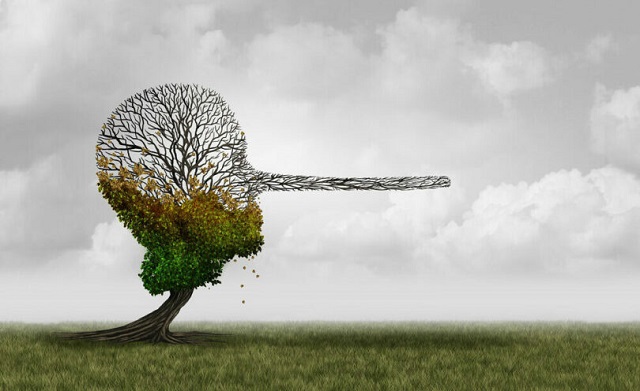
 Uncategorized2 days ago
Uncategorized2 days agoCNN’s Shock Climate Polling Data Reinforces Trump’s Energy Agenda
-

 Opinion1 day ago
Opinion1 day agoPreston Manning: Three Wise Men from the East, Again




